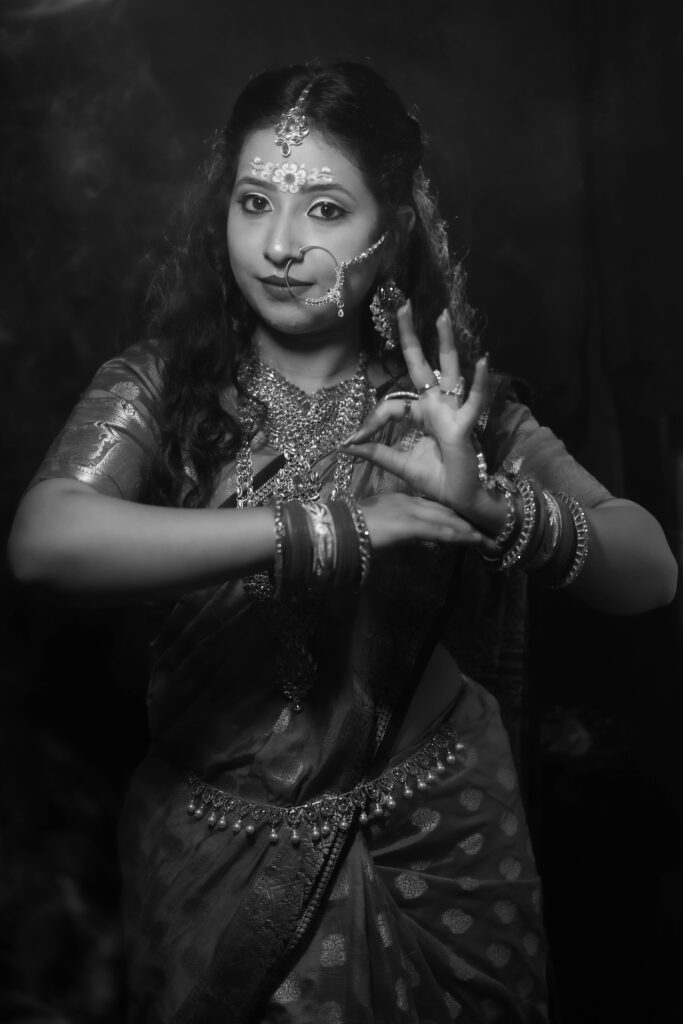- The Bomkai Sari is a traditional handloom saree that originates from the Bomkai village in the Ganjam district of Odisha, India. It is also known as Sonepuri saree or Bomkai silk saree.
- The saree is characterized by its intricate thread work and embroidery, which is typically done using cotton and silk threads. The borders and pallu (the hanging end of the saree) of the Bomkai saree are usually adorned with traditional motifs, such as flowers, birds, animals, and geometric patterns.
- Bomkai sarees are typically woven using silk or cotton threads, and come in a range of colors and designs. They are popular among women in Odisha and other parts of India, and are often worn during weddings, religious ceremonies, and other important events.
- The process of making a Bomkai saree is a time-consuming and labor-intensive task, which involves spinning the threads, dying them, and then weaving them using a traditional handloom. The intricate thread work and embroidery is done by skilled artisans, who often work for days or even weeks to create a single saree.
- Overall, the Bomkai saree is an important part of Odisha’s rich cultural heritage, and continues to be cherished by women for its beauty, elegance, and traditional craftsmanship.
There are several types of Bomkai Sari, which differ in their design, fabric, and weaving techniques. Here are some of the popular types of Bomkai Sari:
- Sonepuri Bomkai Sari: This type of Bomkai Sari is made using silk threads, and is known for its intricate thread work and embroidery. The borders and pallu of the saree are typically adorned with traditional motifs such as fish, flowers, birds, and animals.
- Pasapalli Bomkai Sari: This type of Bomkai Sari is characterized by its checkered design, which is created by weaving the threads in a specific way. The saree is usually made using cotton threads, and is popular among women in Odisha.
- Bichitrapuri Bomkai Sari: This type of Bomkai Sari is made using a combination of silk and cotton threads, and is known for its unique designs and patterns. The saree usually has a broad border with intricate thread work and embroidery.
- Dhalapathar Bomkai Sari: This type of Bomkai Sari is named after the Dhalapathar village in Ganjam district, where it is traditionally made. The saree is characterized by its unique design, which features a row of woven diamonds on the pallu.
- Barpali Bomkai Sari: This type of Bomkai Sari is made using cotton threads, and is known for its bold and vibrant designs. The saree usually has a plain body with a broad border and pallu adorned with intricate thread work and embroidery.
Overall, each type of Bomkai Sari has its own unique charm and beauty, and is a testament to the rich cultural heritage of Odisha.

Top Bomkai saree
1. BHS Women’s Sambalpuri Pure Cotton Bomkai Saree (Nuapatanapata_Multicolour)
- Care Instructions: Dry Clean Only
- Care Instructions: Dry Clean Only
- Number of Items: 1 Saree
- Weave Specialty: The colors of Sambalpuri fabrics are mesmerizing and even more astonishing is the simple method they use to produce bold geometrical designs.
- Weave Type: Ikat
- Weave Style: Sambalpuri is a weaving style that employs resist dyeing techniques to impart colors to the yarns before their interlacement. The fabric woven in this technique shows a feathered and hazy pattern which is a wonderful classic in its own way.
2.BHS Women’s Sambalpuri Pure Cotton Bomkai Saree Without Blouse Piece (Nuapatanapata_Multicolour)
- Care Instructions: Dry Clean Only
- Care Instructions: Dry Clean Only
- Number of Items: 1 Saree
- Weave Speciality: The colors of Sambalpuri fabrics are mesmerizing and even more astonishing is the simple method they use to produce bold geometrical designs.
- Weave Type: Ikat
- Weave Style: Sambalpuri is a weaving style that employs resist dyeing technique to impart colors to the yarns before their interlacement. The fabric woven in this technique shows a feathered and hazy pattern which is a wonderful classic in its own way.
3.NUAPATANAPATA odisha handloom Handmade pure Cotton Bomkai Saree Khandua Natural Cotton Ikkat sambalpuri Saree For Women Ethnic Wear Traditonal Saree Handloom Saree With Blouse piece
- Care Instructions: Dry Clean Only
- Care Instructions: Dry Clean Only
- Number of Items: 1 Saree
- Weave Speciality: The colours of Sambalpuri fabrics are mesmerizing and even more astonishing is the simple method they use to produce bold geometrical designs.
- Weave Type: Ikat
- Weave Style: Sambalpuri is a weaving style that employs resist dyeing technique to impart colors to the yarns before their interlacement. The fabric woven in this technique shows a feathered and hazy pattern which is a wonderful classic in its own way.
4.BHS Women’s Sambalpuri Pure Cotton Bomkai Saree Without Blouse Piece (Nuapatanapata_Multicolour)
- Care Instructions: Dry Clean Only
- Care Instructions: Dry Clean Only
- Number of Items: 1 Saree
- Weave Speciality: The colours of Sambalpuri fabrics are mesmerizing and even more astonishing is the simple method they use to produce bold geometrical designs.
- Weave Type: Ikat
- Weave Style: Sambalpuri is a weaving style that employs resist dyeing technique to impart colors to the yarns before their interlacement. The fabric woven in this technique shows a feathered and hazy pattern which is a wonderful classic in its own way.
5.BHS Women’s Sambalpuri Pure Cotton Bomkai Saree Without Blouse Piece (Nuapatanapata_Multicolour)
- Care Instructions: Dry Clean Only
- Care Instructions: Dry Clean Only
- Number of Items: 1 Saree
- Weave Speciality: The colours of Sambalpuri fabrics are mesmerizing and even more astonishing is the simple method they use to produce bold geometrical designs.
- Weave Type: Ikat
- Weave Style: Sambalpuri is a weaving style that employs resist dyeing technique to impart colors to the yarns before their interlacement. The fabric woven in this technique shows a feathered and hazy pattern which is a wonderful classic in its own way.
Disclaimer: The content provided on Incredible Sarees’ blog is for informational purposes only. The information presented is based on our knowledge and understanding of sarees as of September 2023, and it may not reflect the latest trends, styles, or industry updates.
The blog posts on Incredible Sarees are intended to provide general information and guidance regarding sarees, including tips on styling, fabric types, draping techniques, and fashion advice. However, it is important to note that fashion trends are constantly evolving, and individual preferences may vary.
While we strive to ensure the accuracy and reliability of the information provided, Incredible Sarees cannot guarantee the completeness, timeliness, or accuracy of the content. Therefore, we advise readers to use their discretion and consult other reputable sources or professionals for specific recommendations and personalized advice.
Incredible Sarees’ blogs may contain external links to third-party websites or resources. These links are provided for convenience and do not imply endorsement or responsibility for the content or services offered on those websites.
The views and opinions expressed in the blog posts are those of the authors and do not necessarily reflect the views of Incredible Sarees as a whole.
Incredible Sarees reserves the right to modify, update, or remove any content on the blog without prior notice. We also reserve the right to change the focus, format, or content of the blog at any time.
By using the information provided on Incredible Sarees’ blog, you acknowledge and agree to the above disclaimer. We encourage readers to engage with us, share their feedback, and contribute to the discussions respectfully.
For any specific concerns or inquiries regarding the content on Incredible Sarees’ blog, please email us at [email protected]


